If you’re unhappy with your kitchen’s overall look and functionality, a remodel is likely in order. This will likely involve significant construction tasks like removing walls (potentially load-bearing), adding or changing windows, and moving plumbing lines and HVAC ductwork.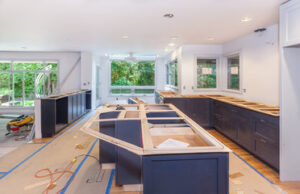
The key to a successful Kitchen Remodeling Tacoma WA is planning. This will ensure smooth traffic flow, a sensible layout, and easy access to all functionalities.
Cabinets are the bones of the kitchen, providing storage for all your cookware, dishes, and food. They come in a wide variety of styles and sizes and can be customized with various interior components for added functionality.
Base cabinets are the most common type of cabinet and typically rest on the floor. They can be stacked two or more deep and are available in widths of 18 inches, 24 inches, and 30 inches. They can be fitted with drawers, shelves, and specialty units for extra storage space.
Wall cabinets are mounted to the walls, usually above the base cabinets and typically 12 inches deep. They can be hung vertically or horizontally. They can be fitted with drawers and shelves and can also include specialized spaces for appliances and trash bins.
Kitchen cabinets can be built from wood or other materials like particle board and MDF (medium density fiberboard). Solid wood choices are stronger and more durable, but expensive. MDF and particleboard are more affordable, but have lower tolerances for levelness.
To ensure that cabinet backs are flush with the wall, use a level to mark reference lines on the wall. One line should be 48 inches off the floor, and the other will indicate where the top of the base cabinet will sit. It’s important to keep this line accurate, as the base cabinets will rest over it.
Countertops
One of the most visible elements in a kitchen, countertops might be the first thing a visitor notices. They are one of the few surfaces that run continuously across the entire room and can help tie the design together.
Granite countertops continue to be a popular choice for homeowners due to its natural composition and beautiful colors. Each piece of granite is different, giving it a unique appearance. Marble is another popular countertop option that is known for its dramatic veining and rich color. Both are a good match with wood cabinetry.
Porcelain counters are gaining in popularity as they are non-porous and won’t absorb leftover food and germs. They are extremely hygienic and come in a wide range of colors and patterns to suit any style.
Concrete countertops are another customizable option. They can be dyed any color and poured into custom shapes. They can also be inlaid with materials like broken tiles or sea shells to create a unique look.
Regardless of which material you select for your countertops, it is important to take accurate measurements of the countertop area to ensure that the new counters will fit correctly. Once the counters are cut, it is a good idea to do a dry fit before installing them. This will allow you to see how they look and make sure that the mitered corners are lined up properly.
Flooring
Flooring is one of the most important elements in a kitchen remodel. It creates the ambiance of the room and can make or break the overall look. It’s also a great way to add a pop of color or accentuate any unique architectural features. Whether your kitchen is rustic and country-style or cutting-edge modern, there is a floor that will match.
Hardwood floors are timeless and classic, adding an instant level of elegance to any kitchen. They are also soft on the feet, making them a comfortable choice for chefs who spend long hours on their feet. Additionally, hardwood floors can flow seamlessly into the hardwood in adjacent rooms to create a cohesive design.
Other popular kitchen flooring options include concrete, cork and bamboo. Concrete is durable, and can be stained to look like wood or tile. It’s also environmentally friendly, and is less expensive than most other flooring options. Cork is another eco-friendly option that provides a soft, springy feel underfoot while offering impressive durability. It’s a great choice for busy kitchens and absorbs sound well.
Many homeowners prefer to put down their new floors first, because they can cover up construction anomalies such as short appliances and out-of-level countertops. It’s also easy to install plywood risers underneath cabinets, which can bring them up to a standard countertop height without disrupting the finished appearance of the floors.
Backsplash
A backsplash is the icing on the cake, the cherry on top of your kitchen remodel. While it won’t have the same financial impact as your countertops or appliances, it can enhance your kitchen’s style and create a cohesive look, which is important to your home’s overall value.
Backsplashes protect walls from heat, moisture, grease, food splatter, and other debris that might damage the surface behind the sink or stove. They are often installed as a tile-based feature and can be designed to add a visual element to the room or even cover an entire wall space.
When deciding on the material for your backsplash, consider how it will coordinate with your countertop and cabinetry. For example, a shiny ceramic tile backsplash would work best in a modern kitchen while a dark stone or stainless steel backsplash may add a more rustic feel.
It’s also important to consider the size of your kitchen and the color palette you’re using when designing a new backsplash. For example, light-colored tiles can visually widen the space while dark hues will make it feel warmer.
Plumbing
If you’re transforming your kitchen, it’s likely that your plumbing will need to be rerouted to match the new layout. This can be a complicated task and it’s usually best left to the professionals. Rerouting can affect the location of sinks, faucets, and other fixtures. It can also change how your appliances are connected to the water line. The plumber will work hand-in-hand with the contractor to ensure that all changes are made efficiently and safely.
A remodeling project is a great time to upgrade your pipes. Old piping can cause leaks and problems with your appliances. Modern piping made of polyvinyl chloride (PVC) is more durable and less likely to cause leaks. It is also easier to install and less prone to corrosion. If you’re replacing your piping, it’s a good idea to invest in new water hoses. They are flexible and more resilient than traditional hoses, which means they will not kink or rupture under pressure.
Kitchen remodels often include adding features that weren’t present in the original kitchen. Some examples of these include entertainment or bar sinks, dishwashers, and refrigerator ice makers. A professional can help you choose the right sized pipes for these additions and run the necessary water lines. They can also help you meet any local regulations regarding low-flow faucets or other guidelines. Adding attractive supply stops to the new pipes is a simple way to enhance their appearance in your kitchen. SharkBite offers a variety of these supplies, including angle stops, straight stops and tee stops, all with push-to-connect inlets.
Electrical
The kitchen is one of the home’s most electrically intensive rooms. The electrical wiring in this space will need to be brought up to the highest standards.
This may include upgrading the home’s service panel (breaker box), adding a subpanel or bringing existing receptacles up to current code standards. It will also likely involve modifying or extending the kitchen’s existing circuits to accommodate additional lighting, plug-in outlets, and new appliances.
Kitchen electrical circuits differ from other areas of the house in that they must be GFCI and AFCI-protected to prevent fire and electrocution. In addition, most kitchen circuits are required to have a dedicated 15-amp, 120/240-volt power point for the kitchen lighting. Outlets serving countertop appliances should also be GFCI-protected to prevent shock and electrocution.
The most common wiring problems arise from outdated and overloaded circuits. The best way to determine how many circuits a kitchen needs is by drawing up an electrical diagram. This will help the remodeler and homeowner identify any problem areas.
If you’re not comfortable with this step, it’s best to hire a professional. He or she will be able to help you create a plan that meets your needs and increases the value of your home. The kitchen is a vital part of your home, and the right electrical wiring will ensure that it’s safe for cooking and entertaining. Moreover, it will increase the longevity of your appliances and keep them running smoothly.

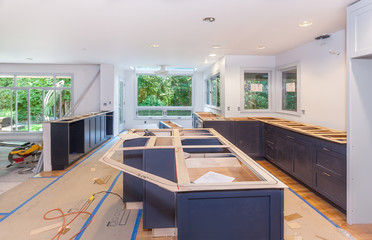
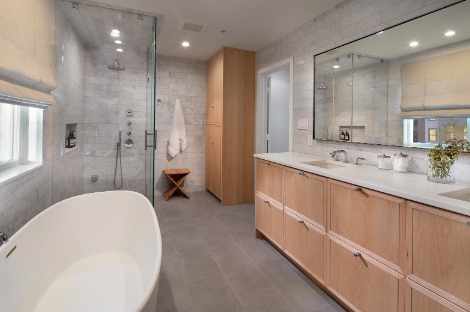
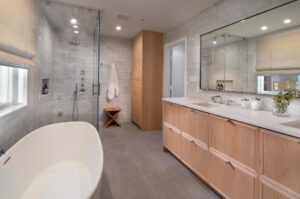 Planning is a crucial part of any home improvement project, including the bathroom. If you wing it, you will likely overspend and end up not being happy with the outcome. Instead, plan your budget, research various fixtures, and make a plan of where you want to begin the renovation. Then, when the time comes, you can start the installation process. Hopefully, these tips will help you enjoy the process and get the best results.
Planning is a crucial part of any home improvement project, including the bathroom. If you wing it, you will likely overspend and end up not being happy with the outcome. Instead, plan your budget, research various fixtures, and make a plan of where you want to begin the renovation. Then, when the time comes, you can start the installation process. Hopefully, these tips will help you enjoy the process and get the best results.
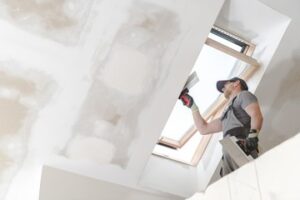 Gypsum
Gypsum